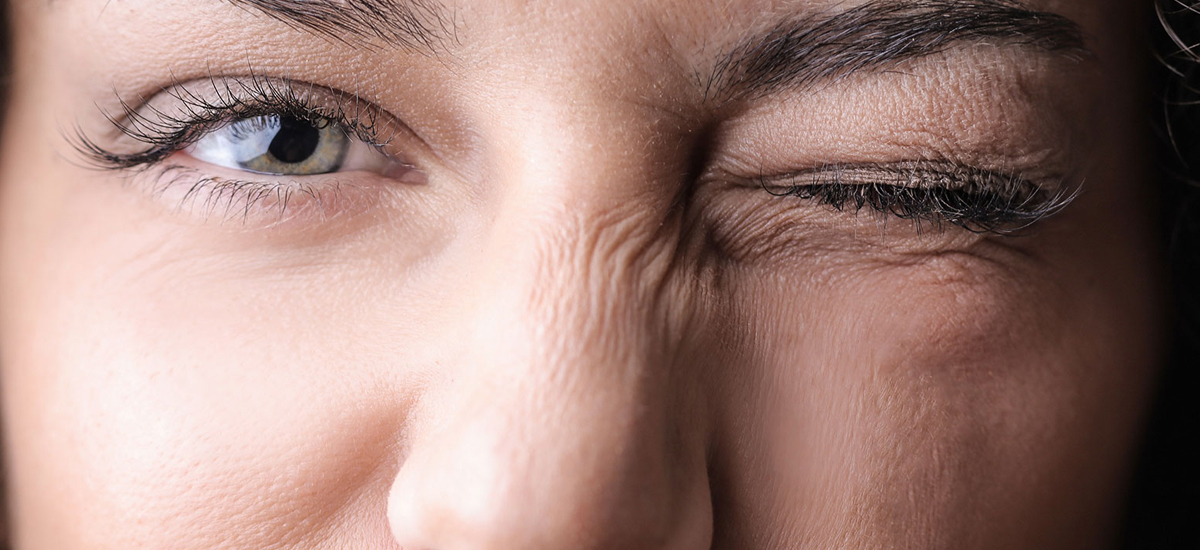

The InfantSEE program was created to help encourage early eye exams in children to catch conditions such as anisometropia. Ideally, all children should have a comprehensive vision exam by an optometrist or ophthalmologist during the first year of life to help identify this condition and others. Children may also complain of blurry vision or headaches. For the very young, parents should note any preferential looking, an eye turn, or failure to reach developmental milestones, especially with mobility. Children who have anisometropia may not show any symptoms. Though anisometropia can be present from birth, it is not typically diagnosed until a childhood eye examination. Anisometropia can also result in diplopia (double vision). The patient may also notice a smaller image in one eye and a larger image in the other eye. Generally speaking, with anisometropia, one sees a blurrier image with one eye compared to the other. The resulting difference in glasses correction may be quite large as the lens of the eye contributes a refractive power of about +16 diopters. Aphakia may be intentional (for example with a baby that has a dense cataract). Other Cause of Anisometropia AphakiaĪphakia occurs with the lens of the eye (the focusing mechanism) is removed and not replaced with an artificial lens (this is called pseudophakia if an artificial intraocular lens is implanted). This means the refractive error correction is worse along one meridian or axis, and the eyes have astigmatism of different magnitudes. This form of anisometropia is caused by high astigmatism (also called cylinder) correction in one eye. Antimetropia (Mixed Anisometropia)Īntimetropia (sometimes called mixed anisometropia) occurs when both eyes have refractive errors but one is myopic (nearsighted), and the other is hyperopic (farsighted). This form of anisometropia causes both eyes to see blurry images, but one eye’s vision will be significantly blurrier.

Compound AnisometropiaĬompound anisometropia occurs when both eyes are either hyperopic (farsighted) or myopic (nearsighted), however, there is still a significant difference in the refractive errors of the two eyes. Simple anisometropia causes one eye to see a blurry image while the other eye sees a clear image. The eye can be either hyperopic (farsighted) or myopic (nearsighted). Simple anisometropia occurs when only one eye has a refractive error. Types of Anisometropia Simple Anisometropia If a patient suppresses, normal binocular vision is disrupted, which can result in amblyopia. The result is the brain subconsciously ignores vision from one eye and fails to learn to use both eyes together. If the amount of anisometropia is large and is not corrected, the patient's visual system (the visual portion of the thalamus, visual cortex, and other processing parts of the brain) may not develop correctly. The result is the brain focuses on the least-blurry image. Anisometropia that is uncorrected leaves the visual system in conflict - one eye is likely blurrier than the other. In brief, anisometropia is one of the causes of amblyopia (lazy eye). An estimated 20% of people have an inter-ocular difference of 0.5D or greater, and 2-3% have a difference of 3D or more. Although much less common, it is possible to have one nearsighted and one farsighted eye - this is a unique subset of anisometropia called antimetropia. Often each eye is nearsighted (myopia) or farsighted (hyperopia), and then to meet the technical criteria of anisometropia the difference between the right and left eye is two or more diopters (the inverse of a meter, which is how an optical lens power is described). The name is derived from Greek components: an- "not," iso- "same," metr- "measure," opia "eye" or "sight". Anisometropia is the condition in which the two eyes have unequal refractive (glasses) power.


 0 kommentar(er)
0 kommentar(er)
